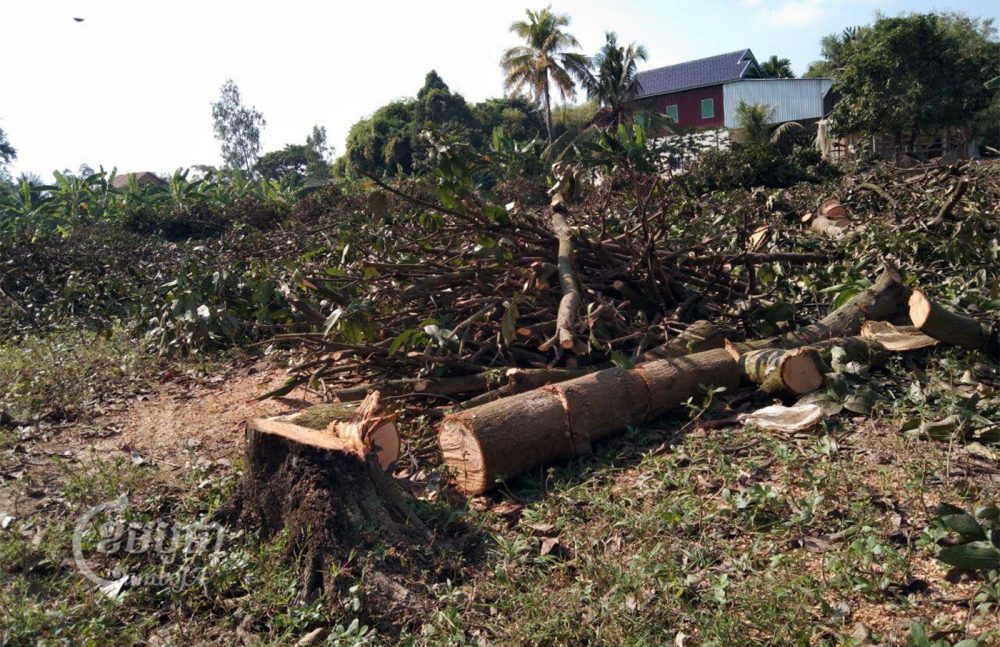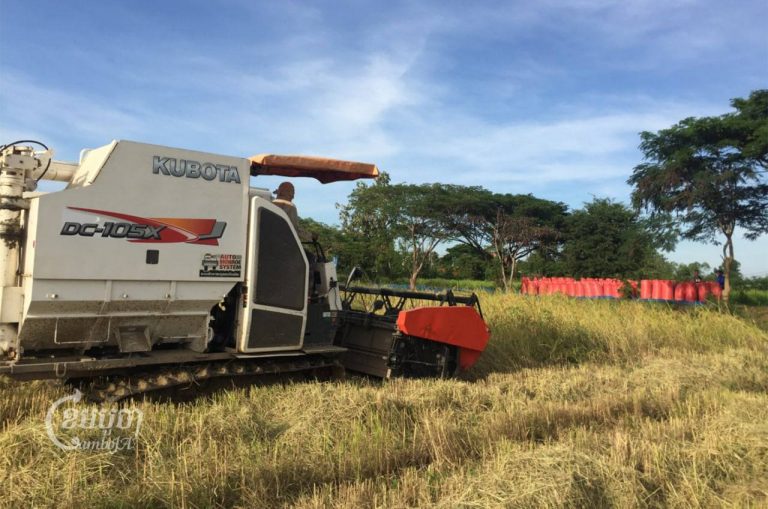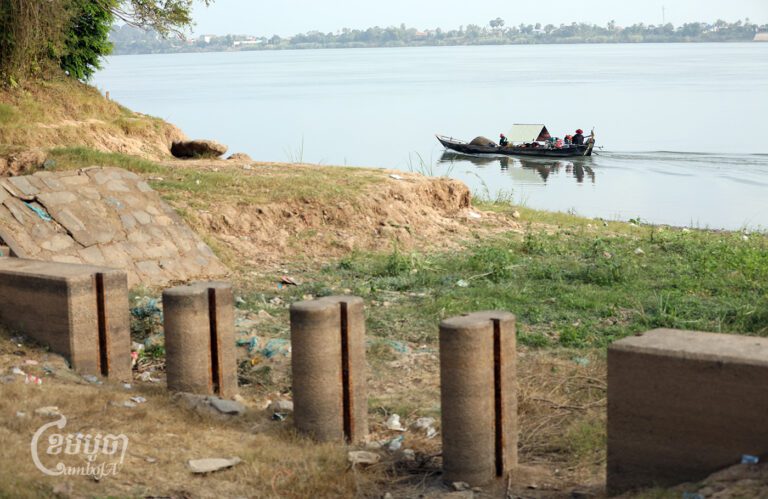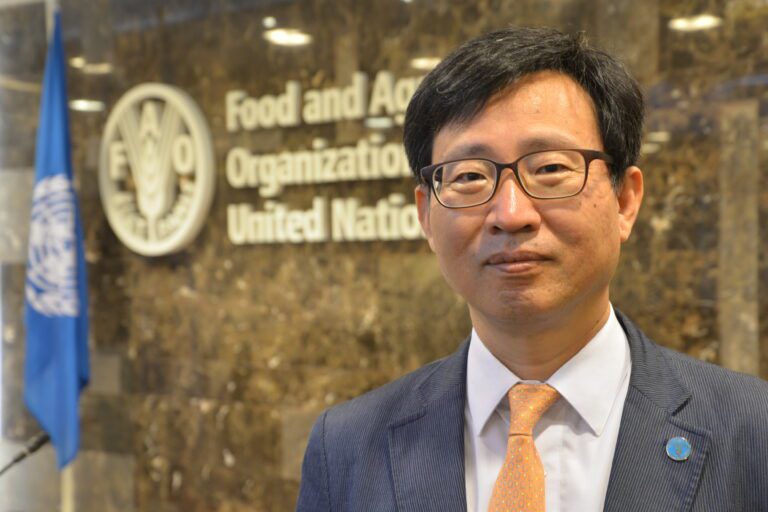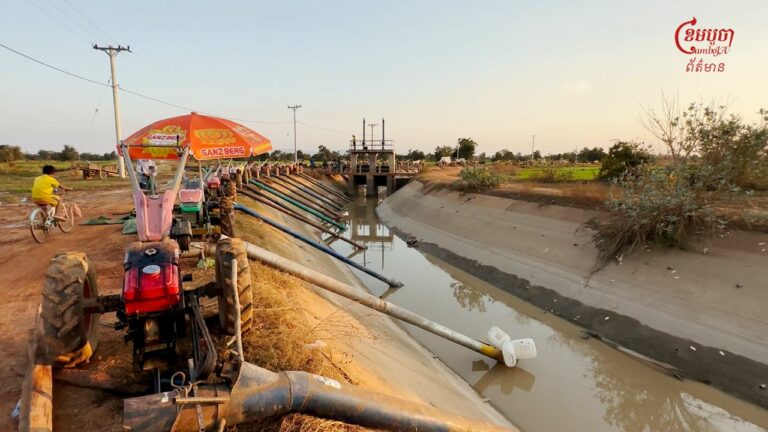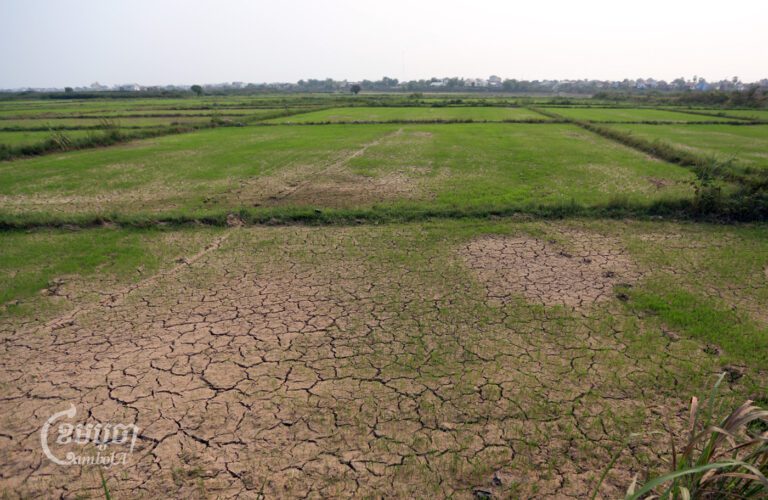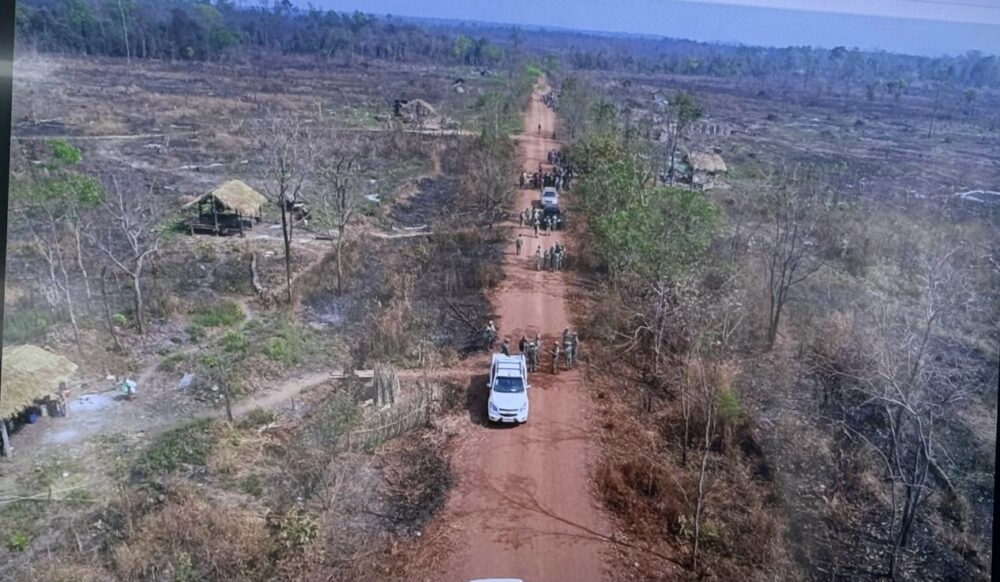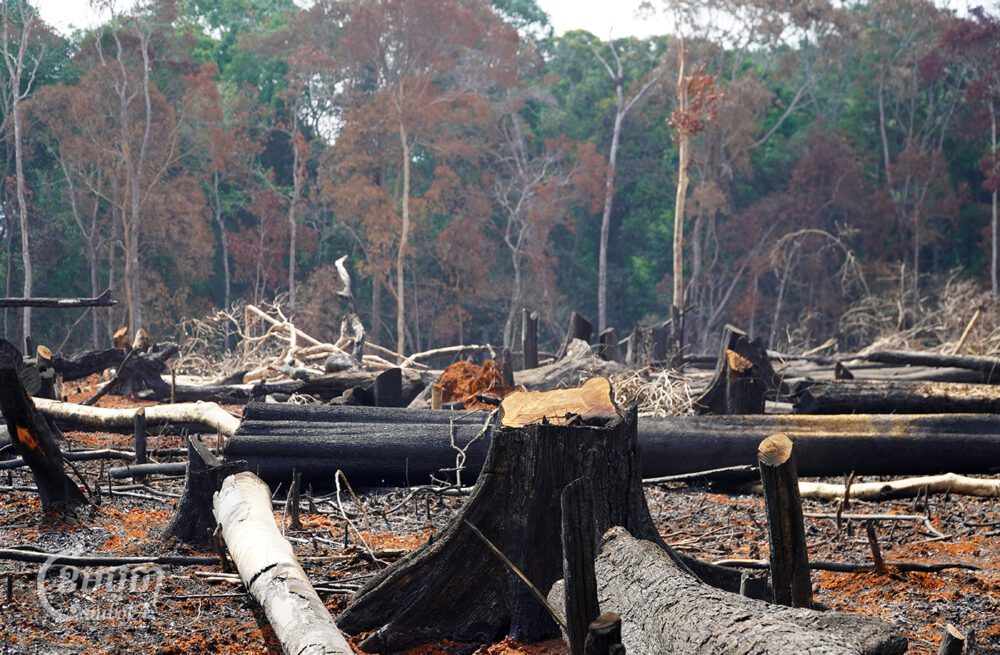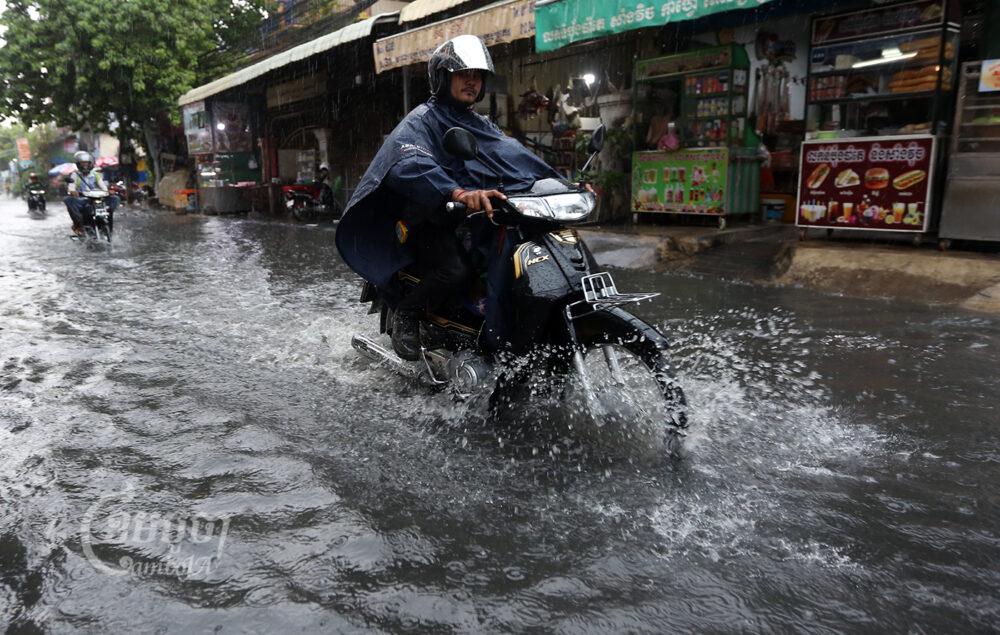With the price of export crops such as mango, longan, and pepper fluctuating wildly in recent years, farmers and plantation owners have been trying to follow the market — replacing poorly selling crops with more profitable ones. But sharp price fluctuations have left many in tens of thousands of dollars in debt, with farmers urging the government to do more to stabilize prices and keep farmers afloat.
Heng Socheat, a technical expert at Cambodian Grassroots Cross-sector Network (CGCN), said that plantation owners have been rapidly moving to other crops that they consider valuable for the market, a move that requires significant capital and which is seeing many fall into debt.
“Generally, most of them fall into debt. The debt is from $ 10,000 up to $ 100,000. For farmers, $ 10,000 is a lot of money, and in some cases they were forced to leave their land”, said Socheat.
In March, Socheat carried out an informal study of farmers in Battambang and Pailin, who have stopped harvesting their mango and longan plantations amid low prices. Other plantation owners, he said, are removing those crops entirely.
“I saw mango and Pailin longan plantations that were abandoned. Mangoes are fully yielding but no one is harvesting them. There is no market. Some owners left their mangoes without harvesting, some cut them down, while others sold their land.”
Moeung Mich, who owns several plantations in Pailin province, said that he recently cut down his longan and mango trees and replaced them with papaya. “They have no value. it’s [selling] too cheap, so I cut them down,” said Mich.
Currently, Mich gets a wholesale price of 200 riels per kilo of mango and 800 riels per kilogram of longan.
“[It is] so cheap, it isn’t even enough to pay for pesticides. Everyone who grows 200 Pailin longan trees is losing 6 million to 7 million riels [in expenses].”

Ros Sokheng owns a pepper plantation in Tbong Khmum province and has struggled with fluctuating prices. She began planting peppers a few years ago, when the price reached 14,000 riels, borrowing money from relatives and the bank. But when she began harvesting in 2018 and 2019, the price of pepper had fallen to 6,000 riels per kilogram.
“At first, I hired others too. When the price of pepper was high, I did not feel stressful; I was so happy. Then the pepper died and I borrowed from one bank to pay for another bank. I grew them on my hectare of land, but when it died and the price fell like this, I was done.”
Due to the falling price, she said, she replaced her 2000 plants with rubber trees — hoping for a better income. They have yet to reach full maturity, leaving her and her husband little choice but to work for other plantation owners to pay off their debt.
“[We] go to cut the grass, to pick pepper for others. [We] do everything when we are called. Our occupation is laborer.”
Had Sokheng stuck with pepper, she likely would have turned a profit this year. Mak Ny, president of the Federation of Pepper and Spices of Cambodia, said that the 17,000 tons to 20,000 tons of pepper harvested last year brought in about 15,000 riels per kilogram.
While some farmers are quick to abandon plants when disease or low prices strike, he said, it’s rarely the right move. Ny said farmers often lack sufficient information on cultivation conditions and market demand and he urges those he works with to join groups or cooperatives where they can access shared knowledge.
“I repeatedly asked them to form associations and work hard together,” Ny said.

Agronomist Yang Saing Koma, founder of the Cambodian Center for Study and Development in Agriculture, said that the issue of clearing existing plantations to follow market conditions has been a recurring problem for many years. Far more should be done, he said, to ensure farmers can access information to allow them to make informed decisions.
“First, professional institutions should help provide information to them regarding production requirements so that farmers can easily decide on cultivation. Secondly, regarding the plan for the future, because the world market has its tendencies, each farmer cannot get that information, so professional institutions must evaluate and provide information to them.”
The Ministry of Agriculture’s 2021 work summary report shows that in 2021, agricultural exports totaled $18 billion, an increase of 43% compared to 2020. The figure represents 24.4 percent of the GDP.
Regarding the annual report of the Ministry of Agriculture, Saing Koma noted that it did not mention the major problems that farmers are currently facing.
“Our farmers are suffering from a set of problems, including rising fertilizer and oil prices, lack of market for agricultural products and low prices, increasing debt, lack of income-generating capacity, lack of water, rising prices of goods and services, etc.” he said.
He urged the government to study and address these issues to ensure that farmers can make a viable living from the agriculture sector.
It’s unclear if the relevant ministries are aware of the extent of the issue. Ministry of Commerce Spokesman Pen Sovicheat said he had not received any reports of farmers removing their crops, rather, he said, Cambodia’s agricultural products had a strong good market, particularly mango and pepper. He dismissed reports of crop shifts as a rumor with no basis in fact, and asked a reporter to put him in touch with any farmers that said they had cut their own crops.
“The phenomenon of posting on Facebook, on social media or rumors that you hear is a story that has no real basis.”
Ministry of Agriculture spokesman Srey Vuthy didn’t respond to multiple requests for comment.
Farmers, meanwhile, report that even when they don’t replace their crops, poor yields and low prices have led to high rates of indebtedness.
According to a 2021 report from the National Bank of Cambodia, Cambodia has 79 microfinance institutions and has provided loans totalling $ 7 billion, of which more than $ 1.34 billion is agricultural loans.
Sem Sophea, a farmer in Kandal province, told CamboJA that 100 percent of her village is in debt and they have received no help from the government.
“They [people in power] said we blame them. They should be blamed because they are our mother, father and they act like they do not see any problems”.
Sok Pov, a Kandal mango farmer, said she has lost money every year in recent memory due to the high cost of gasoline and fertilizer and irregular market price.
Earlier this year, she said, she sold more than half of her land for about $100,000. She used the money to pay off her loans, though she still has debt remaining.
“I sold three hectares of land and sold them to pay debt…. We owe others and the yield [price] is not enough to pay them back.”
Now, she said, they have two hectares remaining, which she uses to cultivate rice. Even when relatives have offered her their mango plantations to cultivate for free, she’s declined — noting the cost of harvesting is higher than the profit. For mangoes, she said, the price is only 150 to 200 riels per kilo, so she and other villagers have left their orchards unattended.

Farmers who spoke with CamboJA seemed to be at a deadlock, noting that the agricultural sector could not provide them an income, but they have no other alternative jobs to pursue.
Some have been trying to chase the right crop for years.
Chea Trang, a resident of Tbong Khmum province, said that 10 years ago he cut down the mango trees on his two hectares and planted pepper instead because of the low fruit price. But in 2020 and 2021, the price of pepper dropped significantly, from 4000 riels to 6000 riels per kilogram. Because he earned so little those years, he didn’t have enough to cover the cost of fertilizer and the water pump, and so his peppers died.
“Last year, I had no money for watering, so I left without any fruit, and if the fruit came, it would fall off. Last year, the price was 4000, 5000 or 6000. Loss is loss, no profit! Despair.”


